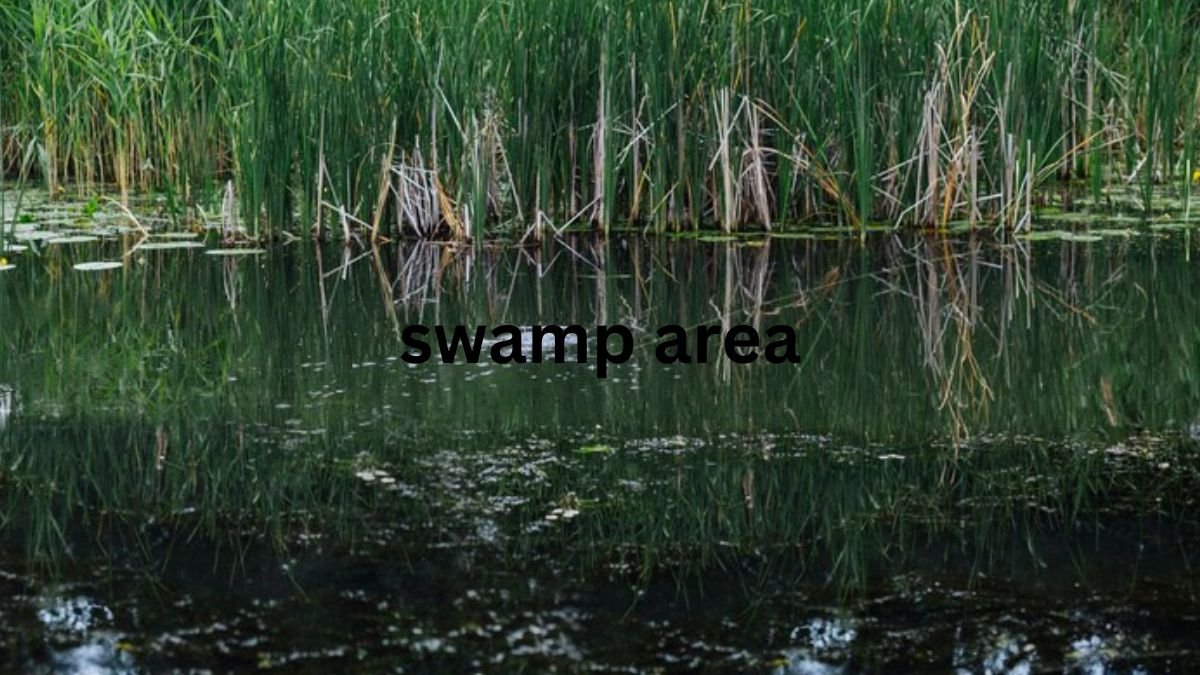Swampy Area in the Southern U.S are often overlooked, yet they hold a unique charm and beauty that is unmatched. These wetlands, filled with diverse flora and fauna, offer a serene escape from the hustle and bustle of city life. This article explores the untouched beauty of these swampy areas and delves into why preserving these southern U.S. gems is crucial for both the environment and future generations.
Swampy areas in the southern U.S. are among the most ecologically rich and visually stunning landscapes in the country. From the mysterious allure of Spanish moss-draped cypress trees to the vibrant ecosystems teeming with wildlife, these wetlands provide essential habitat for countless species and serve as a natural barrier against flooding. Despite their importance, these areas are often undervalued and misunderstood. This article aims to shed light on the intrinsic beauty of swampy areas in the southern U.S. and explain why they matter so profoundly.
Discovering the Swampy Areas
A Glimpse into the Unique Ecosystem
The swampy areas in the southern U.S., such as the Okefenokee Swamp in Georgia and the Atchafalaya Basin in Louisiana, are home to some of the most diverse ecosystems in North America. These wetlands are characterized by their saturated soils, standing water, and an array of plant and animal life that has adapted to these unique conditions. The rich biodiversity includes alligators, wading birds, and countless species of fish and amphibians.
Flora and Fauna: A Symphony of Life
One of the most captivating aspects of these swamps is their lush vegetation. Cypress and tupelo trees dominate the landscape, their roots submerged in the water, creating a hauntingly beautiful scene. The understory is often filled with ferns, mosses, and a variety of wildflowers that add to the vibrant tapestry of colors. Wildlife enthusiasts will find an abundance of creatures, from the majestic great blue heron to the elusive American alligator, each playing a crucial role in the ecosystem.
The Cultural and Historical Significance
Native American Heritage
Long before European settlers arrived, Native American tribes such as the Seminole, Choctaw, and Creek thrived in these swampy areas. They adapted to the environment, utilizing the natural resources for food, shelter, and transportation. The swamps provided a rich bounty of fish, game, and plant materials, making them an integral part of their culture and way of life.
Historical Uses and Legends
Swampy areas in the southern U.S. have also played significant roles in American history. During the Civil War, these wetlands served as natural hideouts and strategic locations for both Union and Confederate forces. The dense vegetation and difficult terrain made them ideal for guerrilla warfare.
Environmental Importance
Biodiversity Hotspots
Swamps are often referred to as biodiversity hotspots due to the wide variety of species they support. These ecosystems are critical for the survival of many endangered and threatened species. The complex interplay of water, vegetation, and wildlife creates a delicate balance that supports a high level of biodiversity, making these areas invaluable for conservation efforts.
Natural Water Filters
One of the lesser-known but equally important functions of swamps is their role as natural water filters. The dense vegetation and slow-moving waters help to trap and break down pollutants, improving water quality before it flows into larger bodies of water. This natural filtration process is essential for maintaining the health of downstream ecosystems and providing clean water for human use.
Flood Control and Climate Regulation
Swamps act as natural buffers against flooding. During heavy rains and storms, they absorb excess water, reducing the impact of floods on surrounding areas. Additionally, these wetlands play a significant role in climate regulation by storing large amounts of carbon dioxide in their vegetation and soils. This helps to mitigate the effects of climate change by reducing the amount of greenhouse gases in the atmosphere.
Challenges and Threats
Urbanization and Habitat Destruction
Despite their importance, swampy areas in the southern U.S. face numerous threats. Urbanization and development have led to the destruction and fragmentation of these habitats. As cities expand and land is cleared for agriculture and infrastructure, the delicate balance of these ecosystems is disrupted, leading to loss of biodiversity and increased flooding risks.
Pollution and Climate Change
Pollution from agricultural runoff, industrial waste, and residential areas poses a significant threat to swamps. Chemicals and nutrients can disrupt the natural processes of these ecosystems, leading to algal blooms, fish kills, and the degradation of water quality. Climate change also poses a long-term threat, with rising temperatures and changing precipitation patterns affecting the delicate balance of these wetlands.
Conservation Efforts
Protecting and Restoring Wetlands
Conservation efforts are crucial for the preservation of swampy areas in the southern U.S. Organizations and government agencies are working to protect these habitats through legislation, land acquisition, and restoration projects. These efforts aim to restore degraded wetlands, reestablish natural water flow, and protect critical habitats for endangered species.
Community Involvement and Education
Community involvement and education are key components of conservation efforts. By raising awareness about the importance of swamps and engaging local communities in conservation activities, we can foster a sense of stewardship and responsibility. Educational programs, guided tours, and volunteer opportunities help to connect people with these unique ecosystems and inspire them to take action to protect them.
The Future of Swampy Areas
Balancing Development and Conservation
The future of swampy areas in the southern U.S. depends on finding a balance between development and conservation. Sustainable development practices, such as smart growth and green infrastructure, can help to minimize the impact of urbanization on these ecosystems. By integrating conservation into planning and development processes, we can ensure that these valuable habitats are protected for future generations.
Innovative Conservation Strategies
Innovative conservation strategies, such as wetland banking and conservation easements, offer new opportunities for protecting swampy areas. Wetland banking allows developers to offset the impacts of development by restoring and protecting wetlands elsewhere.
Conclusion
The untouched beauty of swampy areas in the southern U.S. is a testament to the incredible diversity and resilience of nature. These wetlands provide critical habitats for countless species, protect against flooding, and play a vital role in maintaining water quality and regulating the climate. By understanding and appreciating the value of these ecosystems, we can take action to protect them for future generations. Through conservation efforts, sustainable development practices, and community involvement, we can ensure that the southern U.S. swamps continue to thrive and remain a cherished part of our natural heritage.
Read More : A Tradition of Elegance and The Fascinating World of Kentucky Derby Hats
FAQs
What types of plants are commonly found in southern U.S. swamps?
Southern U.S. swamps are home to a variety of plants, including cypress and tupelo trees, ferns, mosses, and wildflowers.
Why are swamps important for flood control?
Swamps absorb excess water during heavy rains and storms, reducing the impact of floods on surrounding areas.
How do swamps act as natural water filters?
The dense vegetation and slow-moving waters in swamps trap and break down pollutants, improving water quality before it flows into larger bodies of water.
What are some threats to swampy areas in the southern U.S.?
Threats include urbanization, habitat destruction, pollution, and climate change, which can disrupt the delicate balance of these ecosystems.
How can individuals contribute to swamp conservation efforts?
Individuals can contribute by participating in local conservation activities, supporting legislation that protects wetlands, and raising awareness about the importance of these ecosystems.
What is wetland banking?
Wetland banking is a conservation strategy that allows developers to offset the impacts of development by restoring and protecting wetlands elsewhere.











